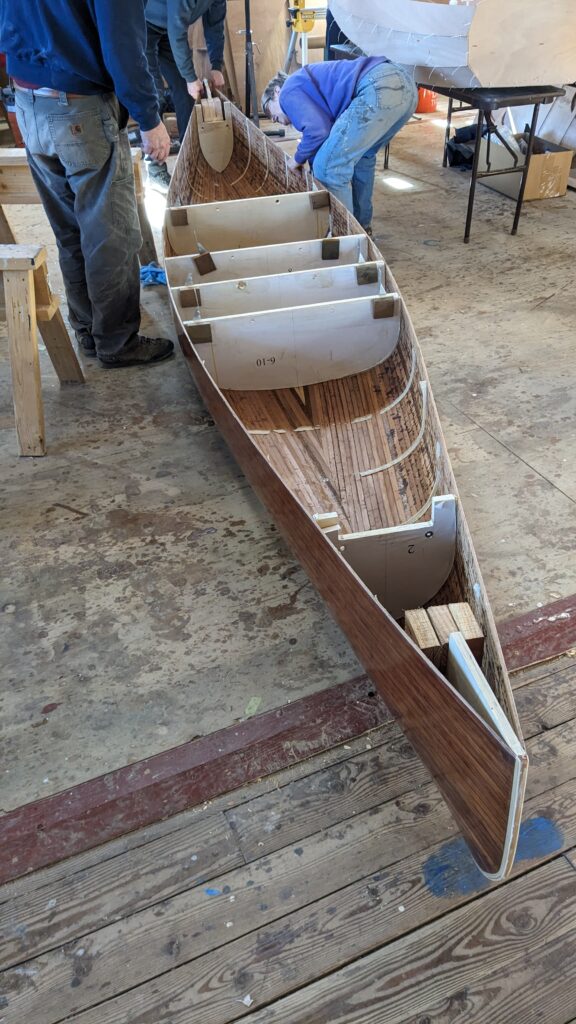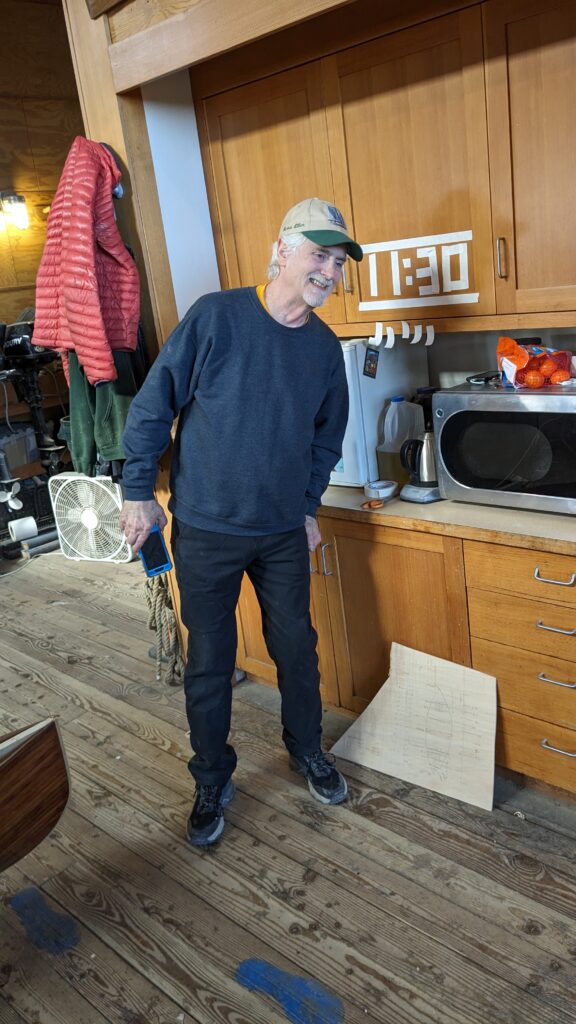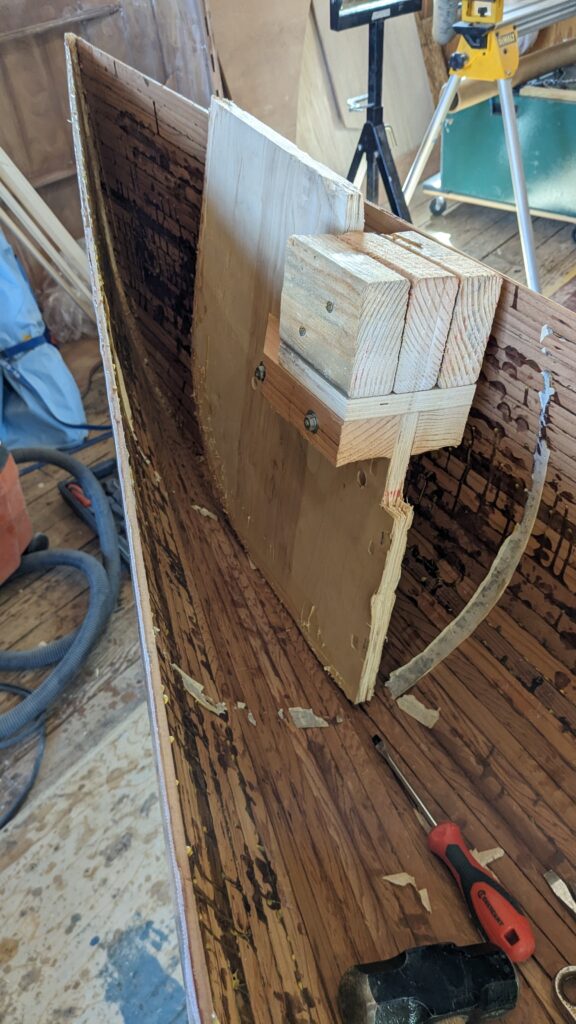
Today is the birthday of this boat.
Up until now, it has only been a fetus. It relied on the stations of the strong back to give it shape and protect it from forces that might wish it ill.
Matthew built the form (aka: “strong back”) to withstand minor explosions. Its spine is three two-by-fours, nailed together and supported by two sturdy legs. Along the spine are stations; thick sheets of plywood like ribs on a whale. The canoe rests tenuously upon this sturdy frame. Without the strong back, the canoe is only a bundle of sticks.
Today…we removed the strong back.
Remove the Stations
Stations are ribs made out of thick plywood. The stations attach to the spine at one-foot intervals. Stations in the middle of the boat are the widest; the narrowest are at the end. The strips of the canoe run parallel to the spine and jump from station to station like a road on a bridge.
Reader tip: I've included a stop action showing today's progress. I'll include times (for example: 01:00) that correspond with the video.
Before we remove the boat from the strong back, we sand along the gunnels to sever the fiberglass cloth dangling from the side of the boat (00:00-00:11). This blunts the sharp edge of the fiberglass and is a much better idea than using scissors to cut off the glass, which is sure to leave epoxy coated fiberglass strands to splinter off in your delicate fingers. Worst Splinters Ever!
Removing the stations from inside the boat involves a lot of crawling around under the boat. (00:11 – 00:24) We remove the bolts holding the stations to the spine then use a hammer to persuade them to release the hull. Most of them give up their support role willingly; they have supported the hull for ten years and they are ready for a break. However, the bow and stern stations are stubborn and glued in place. We didn’t use enough prophylaxis between the stations and the glue. Fortunately, nothing we can’t temporarily solve with a sawzall.
Flip the Boat

With a bit of shaking and pushing, the hull lifts free from the spine and we are finally looking at the inside of the boat. In this photo, you can see the middle stations. At either end of the boat are the stern and bow stations, still firmly attached to the hull. More cursing about this in a minute.
We can either wreck our backs while working on the boat on the ground, or we can fit sawhorses with a cradle made from straps. We wisely choose the latter and bring the boat up to working height.

Now. About those damn end pieces. They are firmly fixed to the hull and we are at a loss on how to get them to release (00:29 – 00:42). We pry, saw, hammer, chisel, hammer some more. Discussion was had about sawing off the end of the boat (not popular). If you are watching the time stamp — located in the background above the microwave — you’ll see we started this struggle at 11:30 am. At about 1:00, we need some time away, so we mark the clock with a big “L” for lunch.
As a side note, our thanks to Steve (Rich’s brother) for tending to the digital clock. He did a competent job of keeping time and rarely needed reminding to change the numbers.
We head to lunch, tired and dreading the continuation of the task as we return. We know this is going to be difficult and may end with major surgery to the boat. We gaily laugh (ha-ha!) then head back to the boat house with a thin veneer of uplifted spirits.

Unknown to us, Joel gets involved (00:45). I’ve reviewed the time-lapse video several times, and it appears he had the stubborn forms out in the space of about one or two minutes. Then … he goes back and lightly glues the forms back in place so we have the satisfaction of knocking the forms out for ourselves. We don’t care what theater Joel has prepared for our amusement; we are relieved and ecstatic. These stations are no longer an issue.
Now we are free to scrape the glue off the inside of the boat. (00:57) This is tedious, but only requires persistence.
Matthew Appears
Hey – lookit this! See the new person in the brown jacket and red cap (01:03)? That’s Matthew, the kid who started this project ten years ago when he was at Benson High School. He stands around, refuses to pick up a chisel, makes some lame excuse about going to make dinner, and splits, leaving us to scrape and sand. We keep it up until six, then call it a day.
Yokes & Thwarts

The astute reader will inquire as to the disposition of the thwarts and yokes. These happen off-screen in a different part of the boat house. Janell spent time this morning with a spindle sander, smoothing the curves. Later in the day, when Janell and Rich were sanding the interior of the boat, I wandered off and played with a spokeshave to round out the edges. There is a bit more sanding and varnishing, but these essential structural parts are almost complete.
It’s a Boat
Each day, this project becomes closer to being a canoe. It’s hard, but satisfying work as we see the reality emerge from the promise.
Tomorrow: gunnels and interior fiberglass

